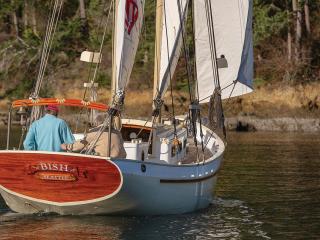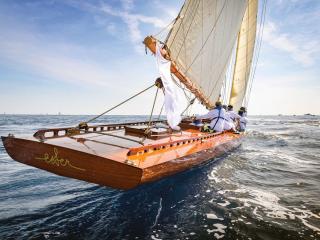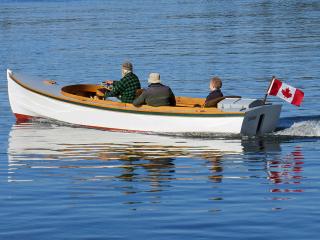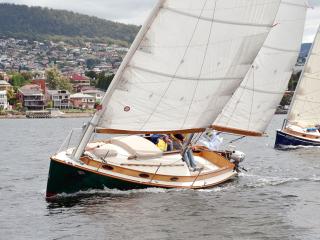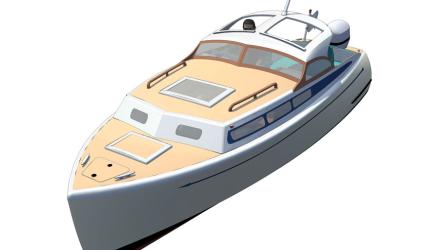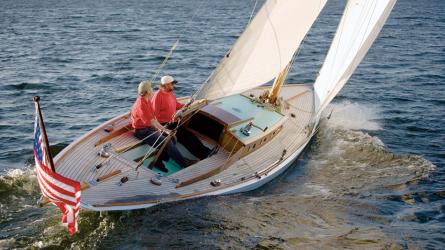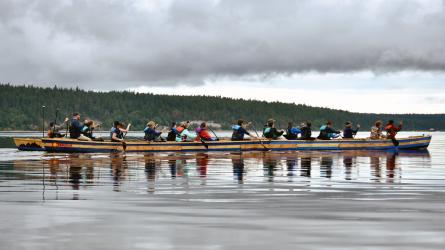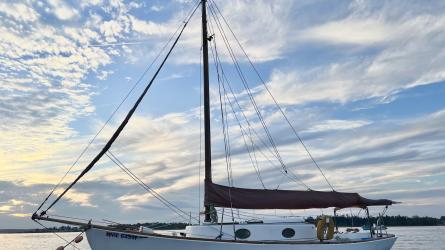March / April 2024
Plank Repair…from the Inside
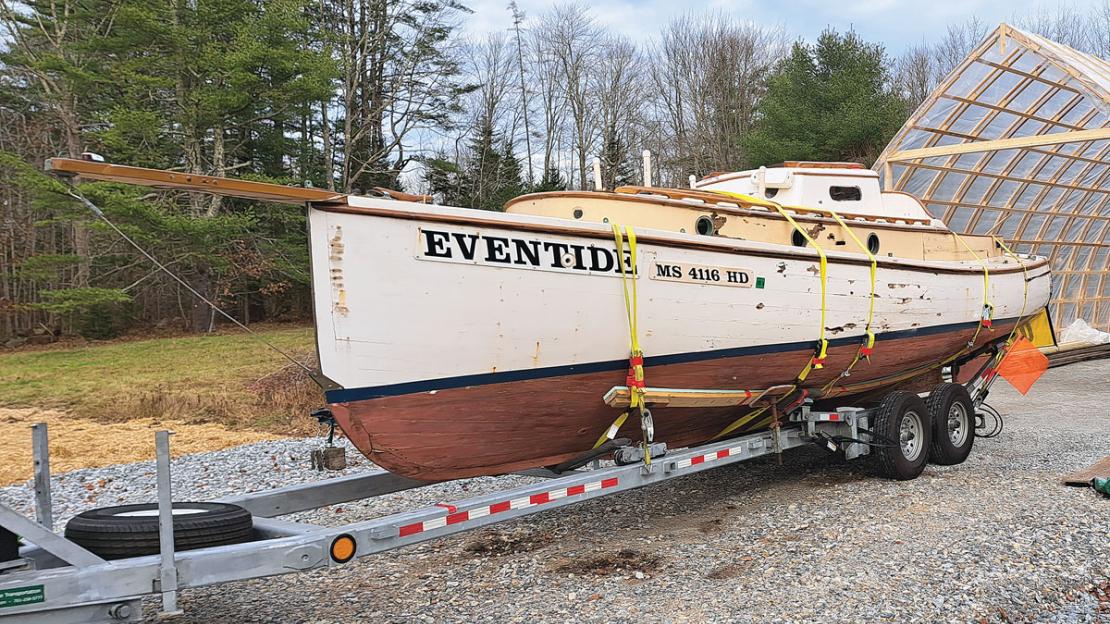
The 27’ catboat EVENTIDE was designed and built in 1933 by George Shiverick of Kingston, Massachusetts. The boat arrived at the author’s shop with its cedar planking largely in good condition, save for deterioration around the holes through which rusted iron clench nails passed. The doghouse is not original and will not be reinstalled.
Iron and oak are both wonderful materials, but if you combine the two in the form of a boat and add a pinch of salt water, you’re just asking for trouble. Eventually, the acid in the oak reacts with the iron, causing it to rust. The rusty iron then retaliates, often causing major degradation in the surrounding wood. Old boats that suffer from this affliction are called “iron sick,” or “nail sick.” Many otherwise good vessels have been scrapped because iron sickness is usually a general condition, and restoration would require replacement of most of the wood in the hull.
In autumn 2022, I was asked to look at EVENTIDE, a big 90-year-old catboat that had been donated to Community Racing, Inc, a nonprofit group based on Cape Cod, Massachusetts. The interior had been removed, giving excellent access to the hull structure, and it was no surprise that the steam-bent frames needed replacing because of iron sickness from the original wrought-iron clench nails. Much of the planking looked amazingly healthy, though, and I thought that there was a good chance that a lot of it could be saved.
After the boat arrived at my shop, I began removing alternate frames so that those remaining would hold the shape of the boat while new frames were installed. Frame removal also gave a good indication of the overall condition of the planking, which can vary a lot from section to section. As is typical, the cedar planking was found to be basically sound, except for the wood immediately surrounding the old nails. But there was enough degradation to warrant some kind of repair; in fact, many restorers would simply have replanked the boat for lack of better options. Another alternative might have been to dig out the bad wood and fill with appropriately thickened epoxy, but this would have been only a temporary fix. I have found that repairs of this sort can cause condensation around large chunks of epoxy; when the hull warms up after a cold spell, the glue remains cold and the moisture gathers around it, and this usually affects the surrounding wood sooner or later.
To read the rest of this article:
Click the button below to log into your Digital Issue Access account.
No digital access? Subscribe or upgrade to a WoodenBoat Digital Subscription and finish reading this article as well as every article we have published for the past 50-years.
ACCESS TO EXPERIENCE
2-for-1 Print & Digital Subscription Offer
For this holiday season, WoodenBoat is offering our best buy one, get one deal ever. Subscribe with a print & digital subscription for $42.95, and we’ll give you a FREE GIFT SUBSCRIPTION to share with someone special.
1 YEAR SUBSCRIPTION (6 ISSUES)
PLUS ACCESS TO MORE THAN 300 DIGITAL BACK ISSUES
PRINT+DIGITAL $42.95
Subscribe
To read articles from previous issues, you can purchase the issue at The WoodenBoat Store link below.
 Purchase this issue from
Purchase this issue from
